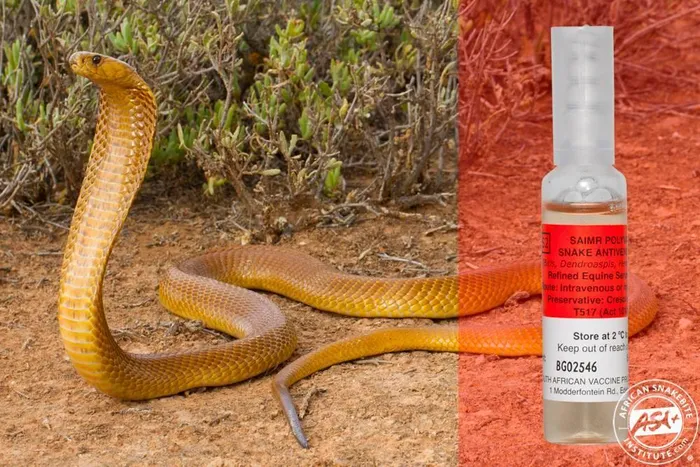No antivenom crisis in South Africa, says African Snakebite Institute

South Africa is not facing an antivenom shortage, says the African Snakebite Institute, despite misleading social media claims. Fewer than 100 human snakebite victims require antivenom each year, and current supplies, including the WHO-approved imported PANAF Polyvalent, are sufficient for hospitals and veterinarians.
Image: African Snakebite Institute
AMID growing misinformation circulating on social media, experts have moved to reassure the public that South Africa is not facing an antivenom shortage. “Firstly, there is no antivenom crisis, despite misinformation being spread on social media,” says Johan Marais of the African Snakebite Institute.
Concerns have flared in recent years after the South African Vaccine Producers (SAVP), a division of the National Health Laboratory Service, encountered significant production challenges following the Covid-19 period. Their stock of polyvalent antivenom, the primary treatment for serious snakebites in Southern Africa, ran out as the facility halted production for upgrades. SAVP previously announced it would resume antivenom manufacturing by November 2025.
However, Marais says current supplies are stable and sufficient, with no immediate reason for alarm.
And spokesperson for Mediclinic Gariep in Kimberley, Denise Coetzee, confirmed that statement. “Our hospital has sufficient supply of antivenom for (bites) snakes and spiders, but we do not currently have it for scorpions,” she said.
Snakebite numbers far lower than assumed
Despite perceptions that snakebites are common and routinely life-threatening, South African data tells a more reassuring story. Fewer than 800 snakebite victims are hospitalised nationwide each year. Most cases do not require antivenom at all as they involve harmless or mildly venomous species, or highly venomous snakes that inject minimal venom.
“Bear in mind that medical doctors treat snakebite symptoms, not snakebites,” Marais emphasises.
On average, fewer than 100 patients receive antivenom annually in South Africa, each typically needing between six and twelve vials of polyvalent antivenom. Even fewer cases involve Boomslang bites, with fewer than six people a year requiring Boomslang-specific antivenom. Altogether, this represents well under 1,500 vials of antivenom per year, while SAVP at its peak produced nearly ten times that amount.
Dogs are treated more often than humans
A surprising but consistent trend is that pets, especially dogs, account for far more antivenom use than humans. Most dogs instinctively attack snakes, often resulting in severe envenomation when highly venomous species are involved. In these cases, between one and four vials of antivenom are typically administered.
Many dogs survive if treated promptly; however, the rapid onset of symptoms means that some do not reach the veterinary clinic in time.
Treatment costs remain high
Polyvalent antivenom costs just over R2,000 per vial. Treating a human patient after a serious snakebite can easily exceed R100,000, and in cases requiring multiple surgeries for tissue damage, the bill may rise above R1 million. For pets, treatment costs generally range from R5,000 to R30,000 or more, depending on the severity of the bite and the number of vials used.
Imported antivenom ensures continued supply
Although SAVP has not yet confirmed whether local stock levels have fully stabilised, South African hospitals and veterinarians have, for several years, been using an imported product known as PANAF Polyvalent.
Imported from India, PANAF costs slightly over R2,000 per vial and is approved by the World Health Organisation. It covers venom from medically significant Southern African snakes, comes in powder form, does not require refrigeration, and has a long four-year shelf life, making it practical for both urban and rural facilities.
Suppliers currently hold adequate stock, and any hospital or veterinary practice may purchase as needed.
Marais encourages anyone experiencing difficulties obtaining antivenom to reach out directly: +27 82 494 2039 or johan@asiorg.co.za.